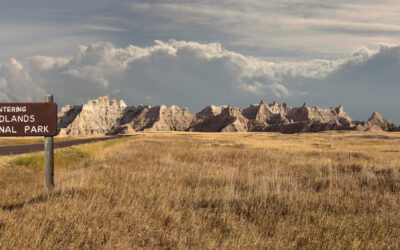The Crazy Horse Memorial stands as a testament to the enduring legacy of the Oglala Lakota warrior, Crazy Horse, whose valiant efforts in the 19th-century Indian Wars made him a symbol of resistance and heroism. This article delves into the pivotal moments of his life, the cultural impact he left behind, and the ongoing significance of the memorial dedicated in his honor.
Key Takeaways
- Crazy Horse played a crucial role in the Battle of the Little Bighorn, leading to Custer’s defeat, and his actions have been immortalized in popular culture, notably by Anheuser-Busch’s advertising.
- The Black Hills War was a significant period of resistance for the Lakota, with Crazy Horse being a central figure in the fight against encroachment, culminating in the tragic Wounded Knee Massacre.
- The Great Plains Wars, including the Treaty of Fort Laramie and events such as the Sand Creek Massacre, set the stage for Crazy Horse’s resistance and the subsequent conflicts that defined his legacy.
- Crazy Horse’s image and story have been shaped by various cultural influences, including commercial campaigns, literary works, and historical narratives, influencing modern perceptions.
- The Crazy Horse Memorial serves as a powerful symbol of Native American resilience and honors the warrior’s life, while also sparking discussions on how history is remembered and interpreted.
The Showdown at Little Bighorn: Crazy Horse’s Defining Moment
Custer’s Ill-Fated Last Stand
The Battle of the Little Bighorn stands as a pivotal moment in the history of the American West. On the rolling plains of Montana, a significant confrontation unfolded between the United States cavalry, led by General George Armstrong Custer, and a coalition of Native American warriors, including the Cheyenne and Sioux, under the leadership of Crazy Horse and inspired by Sitting Bull.
Custer’s tactical decisions during the battle have been scrutinized over the years. His choice to divide his forces, which ultimately led to the detachment from the main body of troops, resulted in a disastrous outcome for his men. The vastly outnumbered soldiers faced a relentless assault from the Native American forces, culminating in what is known as Custer’s Last Stand.
The aftermath of the battle left no survivors from Custer’s immediate command, and it marked a significant victory for the Native American tribes. The event has been immortalized in various forms, including the Anheuser-Busch sponsored painting, "Custer’s Last Fight," which became an iconic representation of the battle in American saloons. This depiction, along with other historical interpretations, has contributed to the enduring legacy of the battle and the complex figure of Crazy Horse.
The Role of Crazy Horse in the Battle
Crazy Horse played a pivotal role in the Battle of the Little Bighorn, a clash that has been etched into the annals of American history. As a leader, Crazy Horse was instrumental in orchestrating the defeat of General Custer’s forces. The battle, often referred to as Custer’s Last Stand, saw the union of several Native American tribes under the leadership of Crazy Horse and the spiritual guidance of Sitting Bull.
The engagement was characterized by the tactical acumen of the Native American forces. Crazy Horse’s warriors, adept at guerrilla warfare, utilized the terrain to their advantage, encircling Custer’s men who were isolated from their main body of troops. This strategic maneuver led to a decisive victory, with all of Custer’s men being killed in the confrontation.
The aftermath of the battle sparked a national conversation, with some viewing it as a military triumph for the Native Americans, while others debated its classification as a massacre. This discourse continues to shape historical interpretations of the event. The Crazy Horse Memorial, a monumental project in South Dakota, stands as a testament to the legacy of Crazy Horse, financed by visitors and donations, and remains the world’s largest mountain carving in progress.
The Aftermath and Historical Interpretations
The Battle of Little Bighorn did not mark the end of the struggle for the Lakota people, nor did it conclude the story of Crazy Horse. The aftermath of the battle saw a surge in military campaigns against the Plains tribes, with the U.S. government determined to quash any further resistance. The legacy of Crazy Horse and the battle’s significance continue to be subjects of extensive historical debate and interpretation.
Historians have approached the events with varying perspectives, often influenced by the prevailing narratives of their times. For instance, the works of Jeffrey Ostler and Xabier Irujo highlight the genocidal aspects of the wars against Native Americans, while Dee Brown’s ‘Bury My Heart at Wounded Knee’ offers a non-academic, yet impactful narrative of the struggles faced by indigenous peoples.
The historiography of the Great Plains Wars, including the role of Crazy Horse, has evolved over time, with modern scholars like Daniel K. Richter and Russell Thornton providing nuanced accounts that challenge earlier interpretations. These academic efforts, alongside memorials such as the Crazy Horse Memorial in South Dakota, serve to honor the history and culture of the Lakota and ensure that the legacy of Crazy Horse remains a vibrant part of American consciousness.
The Struggle for the Black Hills: A Legacy of Resistance
The Significance of the Black Hills to the Lakota
For the Lakota people, the Black Hills, or Paha Sapa, hold profound cultural and spiritual significance. The Black Hills were not just a home, but a sacred space central to their identity and way of life. The intrusion of settlers during the Dakota gold rush and the subsequent government actions to acquire the land marked a pivotal moment in Lakota history.
The Great Sioux War of 1876-77, also known as the Black Hills War, was a direct result of the U.S. government’s failure to enforce treaty rights and the Lakota’s staunch resistance to surrender their sacred lands. The discovery of gold in the Black Hills catalyzed a conflict that would have lasting repercussions for the Lakota people.
- The U.S. government’s offer to buy the Black Hills was firmly rejected by the Lakota.
- A deadline was set for the Lakota to return to reservations, which was not met, leading to military action.
- The gold rush of 1875-78 intensified the struggle, culminating in the Wounded Knee Massacre, a tragic end to the conflict.
Crazy Horse’s Fight Against Encroachment
The struggle for the Black Hills was not just a battle over land, but a fierce resistance against the erosion of a way of life for the Lakota people. Crazy Horse emerged as a symbol of this resistance, leading his people with a combination of tactical brilliance and unyielding determination. The Great Sioux War of 1876-77, sparked by the Dakota gold rush, marked a significant chapter in this resistance. The U.S. government’s decision to cease evicting trespassers from the Black Hills, and its subsequent offer to purchase the land, was met with steadfast refusal by the Sioux.
When diplomacy failed, the government resorted to an ultimatum, demanding the return of the Lakota to reservations by January 31, 1876. The defiance of this deadline led to Lt. Colonel George Custer’s discovery of the main Lakota encampment, a prelude to the infamous Battle of the Little Bighorn. Crazy Horse’s role in these events was pivotal, as he fought not only for territory but for the survival of his people’s culture and independence.
The following points highlight key aspects of Crazy Horse’s fight against encroachment:
- The Black Hills War was a direct consequence of the U.S. government’s broken promises and the Lakota’s determination to protect their sacred land.
- Crazy Horse’s leadership was instrumental in the Lakota’s battles against U.S. forces, exemplifying his strategic prowess and deep commitment to his people.
- The destruction of resources, such as the killing of 675 ponies, was a tactic used by U.S. forces to weaken the Lakota’s ability to sustain themselves and resist.
Wounded Knee: The Painful Closure of the Black Hills War
The Wounded Knee Massacre stands as a somber symbol of the end of the armed resistance of the Lakota in the Black Hills War. On December 29, 1890, an attempt by the U.S. Army to disarm the Lakota spiraled into chaos near Wounded Knee Creek in South Dakota. The ensuing violence claimed the lives of an estimated 150 to 300 Lakota, many of whom were women, children, and the elderly. This tragic event was precipitated by the growing tensions over the sacred Black Hills and the government’s failure to honor treaties.
The massacre was a direct consequence of the U.S. government’s policy towards the Lakota and their land. After the discovery of gold, the Black Hills were overrun by settlers, leading to the Great Sioux War of 1876-77. The government’s decision to seize the land without just compensation was a clear violation of the Treaty of Fort Laramie. The Ghost Dance movement, which emerged among the Lakota, was seen as a threat by the government, prompting the fateful confrontation at Wounded Knee.
The legacy of Wounded Knee is a poignant reminder of the cost of conflict and the importance of honoring agreements. It marked the end of the Indian Wars and a transition to a new, albeit difficult, chapter for the Lakota people. The site of the massacre is now a National Historic Landmark, serving as a memorial to those who lost their lives and a testament to the resilience of the Lakota spirit.
Crazy Horse in the Great Plains Wars: A Warrior’s Path
The Treaty of Fort Laramie and Its Broken Promises
The Treaty of Fort Laramie, signed in 1851, marked a pivotal moment in the relationship between the United States and the Plains Indians, including the Lakota, Cheyenne, and Arapaho. It was intended to safeguard the passage of settlers along the Oregon Trail by establishing territories for the tribes and allowing for the construction of roads and military posts. However, the treaty’s promises were short-lived, as the discovery of gold in the Black Hills and the subsequent influx of miners led to increased tensions and eventual conflict.
The failure to uphold the treaty’s terms by the U.S. government is a stark reminder of the systemic injustices faced by Native American tribes. The promised annuities and supplies often did not reach the tribes, leading to widespread starvation and hardship. This neglect and the government’s insatiable expansionist policies fueled a series of conflicts known as the Great Plains Wars.
The Department of Missouri’s struggles to manage the situation further exemplified the government’s inability to maintain peace. Despite peace treaties signed with various tribes in 1867, Congress’s failure to ratify them left the tribes without the promised reservation lands and necessary provisions. The resulting desperation among the tribes, who numbered around 6,000, was met with a military force of only 2,600 men, highlighting the dire circumstances and the government’s lack of preparedness or genuine commitment to peace.
The Impact of the Colorado War and Sand Creek Massacre
The Colorado War and the Sand Creek Massacre were pivotal events that intensified the conflicts between Native American tribes and American settlers. The Sand Creek Massacre of 1864 stands as a stark reminder of the brutality inflicted upon the Cheyenne and Arapaho tribes. Peaceful villagers, including women and children, were mercilessly killed by Colorado volunteers, an act that fueled a cycle of retribution and warfare across the Great Plains.
The aftermath of these events saw an escalation in hostilities, with raids by the Dog Soldiers—a fierce band of the Cheyenne—on homesteads and settlements. This period was marked by a breakdown in negotiations and treaties, such as the Treaty of Fort Wise, which failed to garner the support of all warrior factions. The savagery of the massacre and the subsequent Native American raids led to a climate of fear and animosity, with settlers calling for the extermination of Native tribes.
- The Treaty of Fort Wise: Attempted to establish a reservation but was largely ineffective.
- Colorado War: A series of conflicts and raids in the early 1860s.
- Sand Creek Massacre: A brutal attack on a peaceful village that escalated the war.
These events underscore the tragic consequences of broken promises and the devastating impact of violence on the path to the Great Plains Wars.
The Sioux War of 1865: A Prelude to Greater Conflicts
The Sioux War of 1865, often overshadowed by the larger conflicts that followed, was nonetheless a significant chapter in the Great Plains Wars. It marked a period of escalating tensions between the United States and the Sioux tribes, setting the stage for the infamous battles to come. The Powder River Expedition of 1865 was a direct response to the raids on American settlements, igniting a series of skirmishes that underscored the Sioux’s resistance to encroachment on their lands.
The war’s impact extended beyond the immediate military engagements. It was a catalyst for the Sioux’s unyielding struggle for their territory and way of life, which would later culminate in Red Cloud’s War and the Great Sioux War of 1876-77. The following list outlines the sequence of events that characterized the Sioux Wars, highlighting the interconnectedness of these conflicts:
- First Sioux War (1854-1855)
- Dakota War (1862)
- Colorado War (1864-1865)
- Powder River War (1865)
- Red Cloud’s War (1866-1868)
- Great Sioux War (1876-1877)
In the aftermath of the Sioux War of 1865, the stage was set for Crazy Horse and other Sioux leaders to emerge as prominent figures in the resistance against American expansion. Their legacy is not only etched in the history of the Great Plains but also in the rugged landscapes of states like South Dakota, where the spirit of resistance is mirrored in the natural beauty of the region’s parks and trails.
The Cultural Impact of Crazy Horse: Beyond the Battlefield
The Anheuser-Busch Influence on Crazy Horse’s Image
The influence of Anheuser-Busch on the image of Crazy Horse is a fascinating study in the power of marketing and its ability to shape historical narratives. The company’s decision to distribute prints of the painting "Custer’s Last Fight" to saloons across America not only promoted their brand but also cemented a particular portrayal of the Battle of the Little Bighorn in the public consciousness. This depiction, which highlighted the dramatic showdown between Custer’s troops and the Native American forces led by Crazy Horse, played a significant role in how the battle was remembered and interpreted.
While the painting served as an advertisement, it inadvertently contributed to the mythologizing of Crazy Horse as a warrior and a leader. The widespread circulation of the image provided a visual representation that connected the public with a pivotal moment in history, albeit through the lens of a company’s commercial interests. The impact of this campaign on the perception of Crazy Horse and the battle itself is a testament to the enduring power of visual media in shaping historical memory.
- The painting depicted "Custer’s Last Fight" and was used as an advertising campaign.
- Anheuser-Busch’s distribution of the prints helped create a popular image of the battle.
- The campaign inadvertently mythologized Crazy Horse’s role in American history.
Literary and Historical Accounts of Crazy Horse
The figure of Crazy Horse has been etched into the annals of history not only through his actions but also through the extensive literary and historical accounts that have attempted to capture his essence. Crazy Horse’s legacy has been shaped significantly by these narratives, which range from the romanticized to the scholarly. The historical accounts of Crazy Horse are often intertwined with the broader story of the Great Plains Wars, providing context to his role as a leader and warrior.
One of the most notable depictions of Crazy Horse comes from the Anheuser-Busch brewing company’s advertising campaign. They distributed prints of a painting titled "Custer’s Last Fight" across American saloons, which played a role in popularizing a certain image of the Battle of the Little Bighorn, where Crazy Horse’s tactical prowess was on full display. This portrayal has been both criticized and celebrated for its impact on the public’s perception of Crazy Horse and the battle itself.
The literary landscape is rich with works that explore Crazy Horse’s life and the times he lived in. Here’s a brief list of influential titles:
- "Bury My Heart at Wounded Knee" by Dee Brown
- "Crazy Horse: The Strange Man of the Oglalas" by Mari Sandoz
- "The Journey of Crazy Horse: A Lakota History" by Joseph M. Marshall III
Each of these works contributes to the complex tapestry of Crazy Horse’s image, offering insights into the man and the myth. As South Dakota offers a variety of attractions, including museums and parks, visitors can delve deeper into the state’s rich history and heritage, further exploring the legacy of figures like Crazy Horse.
Modern Perceptions and the Role of Memorials
The perception of Crazy Horse and the role of memorials in preserving his legacy have evolved significantly over time. Modern memorials serve not only as reminders of the past but also as platforms for education and reconciliation. The Crazy Horse Memorial in South Dakota, for instance, is a testament to this evolution, symbolizing respect and recognition for the Native American hero.
The memorial’s impact extends beyond its colossal sculpture; it’s a cultural hub where visitors can engage with the history and values that Crazy Horse represented. Here’s a snapshot of the memorial’s multifaceted role:
- Educational Outreach: Programs and exhibits that teach about Native American history and culture.
- Cultural Preservation: Efforts to maintain and celebrate the Lakota way of life.
- Economic Development: Tourism and employment opportunities for the local community.
Historical narratives have shifted from one-sided accounts to more inclusive histories that acknowledge the complexities of the past. This change is partly due to the influence of works like Dee Brown’s ‘Bury My Heart at Wounded Knee’ and Francis Jennings’s ‘The Invasion of America’, which challenged traditional portrayals and emphasized the Native American perspective. As we continue to reflect on Crazy Horse’s legacy, memorials like the one in South Dakota play a crucial role in shaping our collective memory and understanding of American history.






